Cloud kitchens are one of the few food business ideas that let you start lean, scale fast, and avoid high real estate costs. At their core, they are delivery-focused kitchens designed for efficiency. And in today’s digital-first market, that’s a strategic advantage.
The cloud kitchen business model eliminates the dining room, cuts down staffing requirements, and taps directly into the growing volume of food delivery orders. For food entrepreneurs looking to launch with lower startup costs and higher profit margins, this model offers real, tested potential.
Whether you’re transitioning from a traditional restaurant or starting from scratch, understanding cloud kitchen profitability is key. This guide breaks down the numbers, strategies, and business model behind successful cloud kitchen operations so you know exactly what to expect and how to build one that works.
What is a Cloud Kitchen?
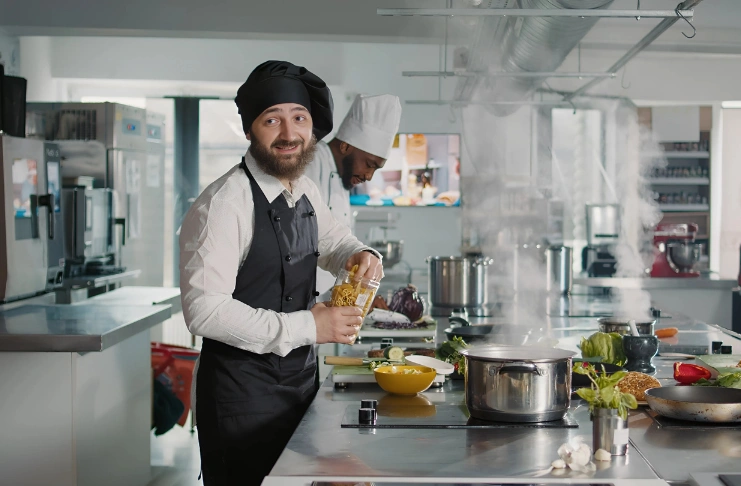
A cloud kitchen is a food production facility built only for delivery and takeout. It does not have a dining area, waitstaff, or foot traffic. Customers place orders through food delivery apps or the kitchen’s own online ordering system, and the food is prepared, packed, and handed off to a delivery service.
This business model allows restaurant operators to focus purely on food preparation and fulfillment. The goal is speed, efficiency, and volume without the distractions or costs of a full-service restaurant.
Cloud Kitchen vs Traditional Restaurant: The Cost Breakdown
Traditional restaurants come with high startup costs. Real estate, furniture, service staff, and décor all add up fast. In contrast, a cloud kitchen typically operates out of a rented commercial kitchen space with no customer-facing area, which drastically reduces expenses.
Here’s what a cloud kitchen avoids:
- Rent for a brick-and-mortar location in a high-footfall area
- Front-of-house salaries and uniforms
- Décor, signage, and interior design
- Utility expenses linked to guest comfort
A traditional restaurant might need $275,000 to $425,000 just to open. A cloud kitchen can be launched with $50,000 to $100,000, depending on the city, menu, and kitchen rental.
Why Cloud Kitchens Are Growing Fast
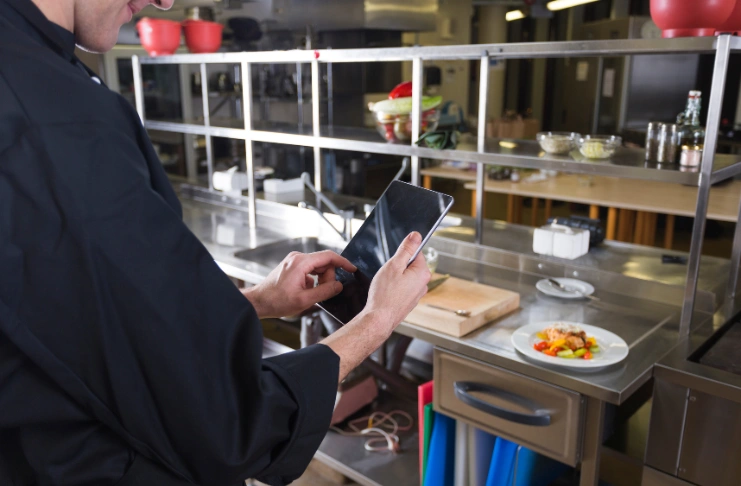
Cloud kitchens are not just a passing trend. They’re an adaptive response to a shifting market where online ordering now dominates food sales.
The Shift to Online Ordering
Online food ordering in the U.S. has grown by over 300% since 2014 and continues to climb year over year. In fact, 60% of U.S. consumers order delivery or takeout at least once a week. They increasingly prefer convenience over dine-in experiences. For restaurant operators, this means optimizing for delivery first makes strong business sense.
Rising Rent and Labor Costs in Physical Restaurants
Running a brick-and-mortar restaurant now involves higher wages, higher insurance premiums, and increased rent in most urban locations. Cloud kitchens bypass these constraints by operating from more affordable commercial kitchen zones, usually in less-trafficked parts of the city.
Flexibility and Scalability of the Cloud Kitchen Business Model
Unlike traditional restaurants, cloud kitchens can test multiple concepts at once. One kitchen can house several virtual restaurant brands under the same roof. Operators can add new cuisines, test pricing models, or even shut down underperforming brands without changing their physical setup.
Cloud Kitchen Profitability: Key Drivers
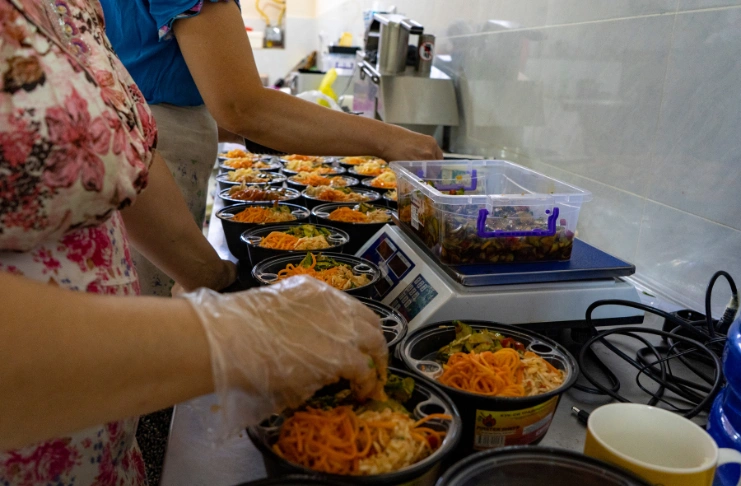
Cloud kitchens are profitable when the unit economics are optimized for delivery-first operations. This means every dollar saved on overhead costs is reinvested into volume, speed, and food quality.
Here are the major drivers:
Lower Overhead Costs Increase Margins
Without a physical storefront or waitstaff, cloud kitchens eliminate a significant chunk of traditional expenses. These include rent in prime real estate, dining room upkeep, front-of-house labor, utilities for customer comfort, and table service logistics.
The only recurring costs are tied to production: raw materials, staff wages in the kitchen, and food delivery logistics.
High Order Volume Through Delivery Apps and Own Channels
Cloud kitchens thrive on volume. A higher number of delivery orders spread across lunch, dinner, and even late-night windows results in better equipment utilization and lower per-order costs.
Operators using both third-party food delivery apps and their own online ordering systems maximize reach. Building a direct channel helps reduce fees paid to aggregators and creates opportunities for repeat customers.
Efficient Inventory and Supply Chain
Smart inventory management in a cloud kitchen prevents food waste and improves gross profit margin. Menu engineering also plays a role in keeping SKUs lean and cross-utilizing ingredients across multiple virtual restaurant brands within one commercial kitchen space.
Scalable Business Model Without Extra Rent
Opening a second cloud kitchen location doesn’t require a million-dollar investment. Operators can replicate a successful cloud kitchen business by simply leasing another commercial kitchen, hiring a core team, and plugging into the same food delivery services.
Tech-Driven Operational Efficiency
Cloud kitchens use software to track orders, optimize delivery timing, monitor food prep times, and forecast demand. This leads to better customer satisfaction and helps boost the net profit margin by reducing human errors and streamlining operations.
High Profit Margin Potential of a Cloud Kitchen Business

The profit margins in cloud kitchens can outperform traditional restaurants when execution is tight. While gross profit margin can reach 60–70%, the real advantage is in net profit margin due to low fixed costs.
The realistic profit benchmark of a cloud kitchen looks like:
- Gross profit margin: 60–70%, depending on food cost control and pricing
- Net profit margin: 15–25% for well-optimized operations
- Monthly revenue per kitchen unit: $25,000 to $80,000
- Break-even period: Often within 12–18 months, compared to 2–3 years for traditional restaurants
Margins improve as the kitchen adds more brands, cross-utilizes ingredients and drives direct online ordering to reduce aggregator fees. Operators who track food waste, monitor prep times, and refine menus regularly tend to see better returns.
Best Performing Food Business Ideas for a Cloud Kitchen
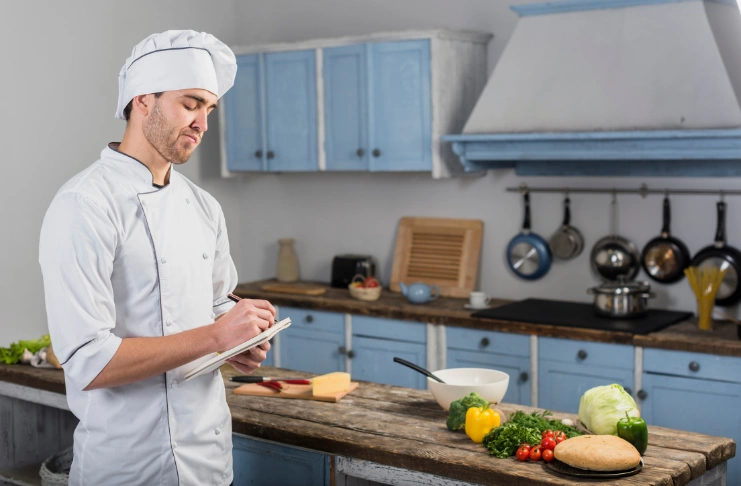
Choosing the right food business idea is critical to cloud kitchen profitability. Some cuisines and concepts are simply more delivery-friendly, more scalable, and require fewer raw materials.
These food business ideas have consistently delivered high-profit margins and operational efficiency across urban markets.
Burgers, Wings & Loaded Fries
This American comfort food combo travels well, has high markup potential, and appeals across age groups. Items like burgers, wings, and loaded fries are low on raw materials, fast to prepare, and ideal for bundling with drinks and sauces. Operators can also create multiple virtual restaurant brands with slight menu variations.
Build-Your-Own Bowls or Salads
This model leverages cross-utilized ingredients (grains, proteins, veggies, and sauces) across multiple SKUs. It also satisfies the demand for customizable, nutritious food, and works well for lunch-heavy urban areas. With optimized prep and portioning, gross profit margins remain high.
Indian, Thai, and Mexican Cuisine
Bold flavors, rich sauces, and warm meals translate well in delivery. These menus use spice-driven recipes that mask minor inconsistencies from heat loss during travel, making them ideal for food delivery services. Prepped in batches, these cuisines scale well in commercial kitchens.
Breakfast Sandwiches & Coffee
Low inventory requirements and high frequency ordering make breakfast items a lucrative cloud kitchen business model. This works particularly well near office hubs, dense residential zones, or partnered with food delivery aggregators offering breakfast promos.
Meal Kits & Reheat-Ready Meals
Meal kits are gaining traction among households that want convenience without sacrificing quality. Cloud kitchens can use off-peak hours to prepare and package these kits with a solid net profit margin. They also help tap into the catering business without requiring a different kitchen setup.
INDUSTRY INSIGHT
| Menu strategy plays a crucial role in the success of cloud kitchens. Research suggests that 70-80% of a cloud kitchen menu should consist of well-loved classics like pasta, pizza, dim sum, biryani, burritos, etc. This provides regular customers with consistency and reliability, which, in turn, drives repeat orders. However, 20-30% of the menu must showcase unique or chef-special items. It will help you boost your brand recall and social media engagement, as standout menu items often receive higher visibility online. |
Setting Up a Profitable Cloud Kitchen Business
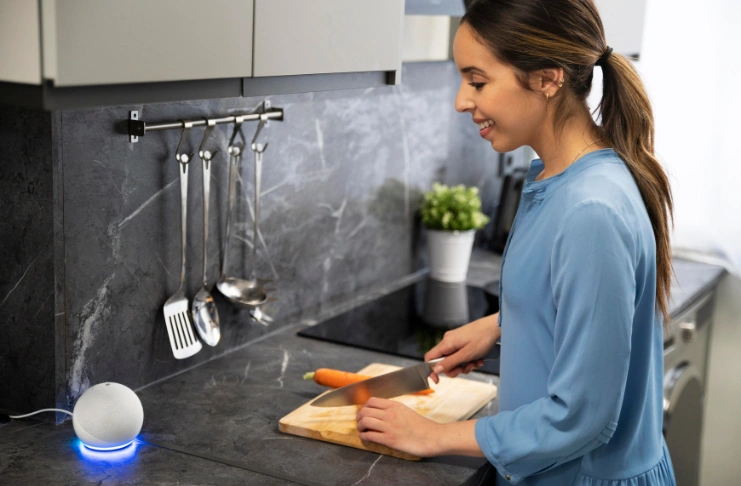
Launching a cloud kitchen requires strategic planning. While the startup costs are lower than a brick and mortar location, you still need to invest in compliance, commercial kitchen infrastructure, and streamlined delivery systems to hit sustainable profit margins.
Here’s how to build a foundation that works.
Choose the Right Commercial Kitchen Space
You can either:
- Rent a commissary kitchen: Ideal for startups. These are shared commercial kitchen spaces with equipment already in place. They’re licensed, affordable, and scalable.
- Lease your own facility: Higher startup costs but full control. Works for multi-brand cloud kitchen businesses with long-term growth in mind.
Ensure your location is central to your delivery radius. Speed matters. You should be within 3–5 miles of dense residential or commercial zones to ensure that the food delivered is still warm and fresh.
Get Licenses and Permits
Even without a dining room, compliance is non-negotiable. You’ll need:
- Food Service Establishment Permit from your local health department
- Business License and EIN from the IRS
- State and local sales tax registration
- Food Handler Certifications for staff
- Fire and safety clearance
Use your state’s business portal to verify any location-specific rules. Most cities also require health inspections before launch.
Hire Lean, Trained Staff
Unlike traditional restaurants, a cloud kitchen doesn’t require servers or hosts. But don’t cut corners in the kitchen. Hire:
- Line cooks with batch prep experience
- A kitchen manager or head chef (even if you’re one brand)
- One packer-expediter per shift to handle delivery orders efficiently
Cross-train staff for flexibility. You want to minimize downtime without compromising food quality.
Invest in Core Technology
Your tech stack will influence everything from online ordering to operational efficiency. Prioritize:
- POS system that integrates with online ordering platforms
- Inventory management software to track raw materials and reduce food waste
- Order aggregators like Cuboh or Otter to consolidate orders from food delivery apps
- KDS (Kitchen Display System) to manage prep times
Your tech setup should allow real-time tracking, smart routing for your delivery service, and auto-flagging for stockouts.
Marketing Your Cloud Kitchen for Maximum Profit Margins
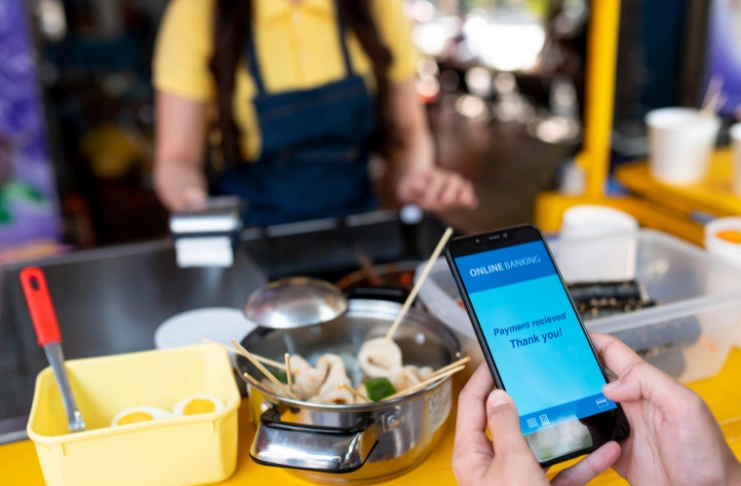
When marketing a cloud kitchen, you’re not attracting walk-ins or building ambiance. Instead, your focus is on digital visibility, online ordering conversions, and customer retention through delivery apps.
Optimize for Food Delivery Apps
Most of your initial traffic will come from third-party delivery services like DoorDash, Uber Eats, and Grubhub. To rank higher:
- Use high-quality food photography that looks appetizing on mobile screens
- Write clear, keyword-rich descriptions for each menu item
- Maintain consistent hours and fast preparation times to boost platform ratings
- Respond to customer reviews quickly and professionally
Ghost kitchens that maintain 4.5+ star ratings on delivery apps experience better customer engagement and retention rates than competitors with lower ratings.
Build Your Own Online Ordering System
Relying solely on third party delivery apps means paying 15-30% commission fees. Building direct channels through your own website or mobile app improves net profit margin significantly.
Use platforms like ChowNow or Square to create a branded online ordering system. Promote it through social media, email marketing, and packaging inserts to encourage repeat customers to order directly from you.
Leverage Social Media for Brand Building
Even without a physical storefront, your virtual restaurant brands need personality. Use Instagram and TikTok to showcase behind-the-scenes prep, new menu items, and customer testimonials.
Focus on food styling, short-form video content, and local community engagement. Partner with food influencers in your delivery area to expand reach and attract new potential customers.
Email Marketing and Customer Retention
Collect customer emails through your online ordering system and delivery app integrations, where possible. Send weekly newsletters with:
- New menu launches
- Limited-time discounts
- Exclusive offers for direct orders
- Seasonal specials
Email marketing helps build repeat customers, which is crucial for sustained profit margins in the competitive food delivery market.
Operational Efficiency Tips for Higher Profits
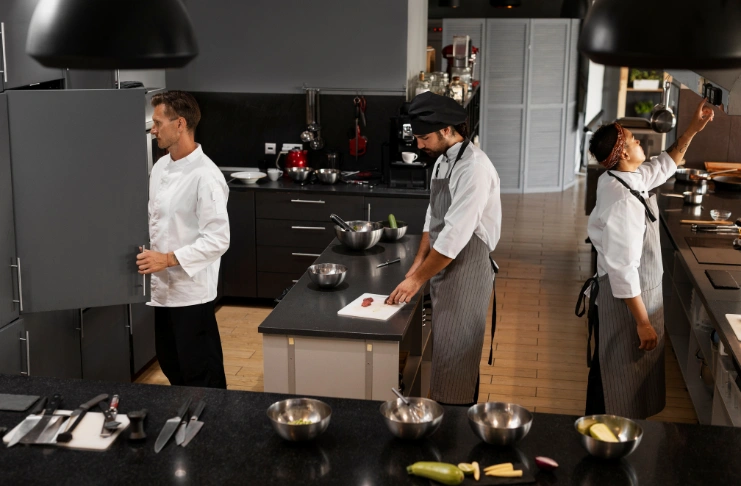
Efficiency determines profitability in cloud kitchen operations. Small improvements in prep time, order accuracy, and ingredient utilization compound quickly when you’re processing hundreds of orders daily.
Streamline Your Menu for Speed
Design your menu around shared ingredients and standardized cooking methods. This reduces prep complexity, minimizes food waste, and speeds up order fulfillment.
For example, if you’re running multiple virtual restaurant brands from one kitchen, use the same base proteins (chicken, beef, tofu) across different cuisines. Change the sauces, seasonings, and presentations to create distinct brand experiences.
Implement Batch Cooking
Prepare high-volume items in batches during off-peak hours. This works particularly well for:
- Proteins that can be portioned and reheated quickly
- Sauces and marinades
- Grain bowls and salad bases
- Soup stocks and curry bases
Batch cooking reduces labor costs during rush periods and ensures consistent food quality across all delivery orders.
Track Key Performance Metrics
Monitor these operational metrics weekly:
- Average order preparation time
- Food cost percentage per menu item
- Order accuracy rate
- Customer satisfaction scores from delivery apps
- Weekly food waste amounts
Use this data to identify bottlenecks, optimize pricing, and refine your menu. Cloud kitchens that track metrics closely typically achieve 15-20% better profit margins than those that don’t.
Optimize Packaging for Delivery
Poor packaging leads to food quality issues, negative reviews, and lost repeat customers. Invest in:
- Leak-proof containers for saucy items
- Breathable packaging for fried foods to prevent sogginess
- Insulated bags for temperature-sensitive items
- Clear labeling for easy order identification
Quality packaging costs 2-3% more but prevents chargebacks and maintains customer satisfaction, protecting your long-term profitability.
Manage Inventory Smartly
Use inventory management software to track ingredient usage patterns and predict demand. This prevents overordering (which increases food waste) and stockouts (which hurt customer satisfaction).
Set automatic reorder points for high-turnover ingredients and negotiate with suppliers for volume discounts on frequently used raw materials.
Scaling Your Cloud Kitchen Business Model
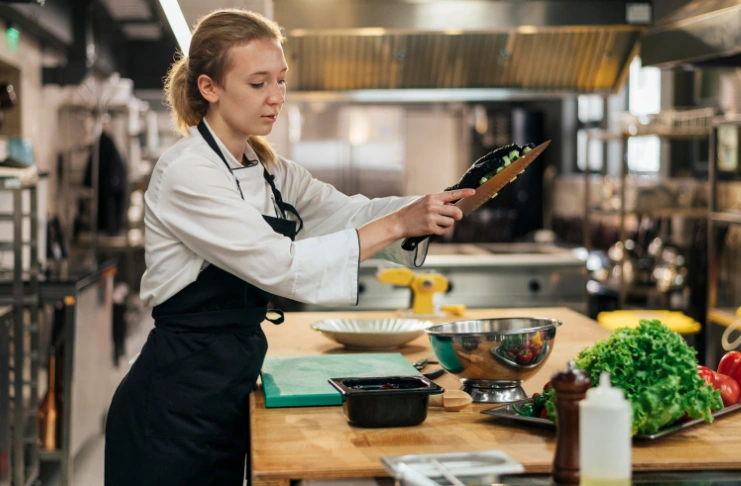
Once your first cloud kitchen achieves consistent profitability, scaling becomes the next logical step. The beauty of this business model is that expansion doesn’t require the massive capital investment of opening traditional restaurant locations.
Multi-Brand Strategy Within One Kitchen
The most efficient way to increase revenue per location is to run multiple virtual restaurant brands from the same commercial kitchen space. This allows you to:
- Target different customer segments with specialized menus
- Test new food business ideas without additional overhead costs
- Cross-utilize ingredients and staff across brands
- Maximize kitchen utilization throughout different dayparts
Successful operators often run 2-4 virtual brands per kitchen, each with distinct branding and target markets.
Geographic Expansion
Opening additional cloud kitchen locations in new cities or neighborhoods follows a proven playbook:
- Identify high-density areas with strong food delivery demand
- Replicate your successful menu and operational systems
- Hire and train local staff using your established procedures
- Plug into local food delivery services and marketing channels
Each new location typically requires $50,000-$75,000 in startup costs, significantly less than brick and mortar expansion.
Franchise Opportunities
Once you’ve proven the model across multiple locations, franchising becomes an option. This allows rapid expansion with lower capital requirements while generating franchise fees and ongoing royalties.
The cloud kitchen industry has seen successful franchise models emerge, particularly for brands that have strong unit economics and proven operational systems.
Technology Integration for Scale
As you expand, technology becomes critical for maintaining quality and efficiency across locations. Invest in:
- Centralized inventory management across all kitchens
- Real-time performance dashboards for each location
- Standardized training modules for new hires
- Automated ordering systems that reduce human error
Technology investments typically pay for themselves within 12-18 months through improved operational efficiency and reduced labor costs.
Financial Planning for Your Cloud Kitchen Business
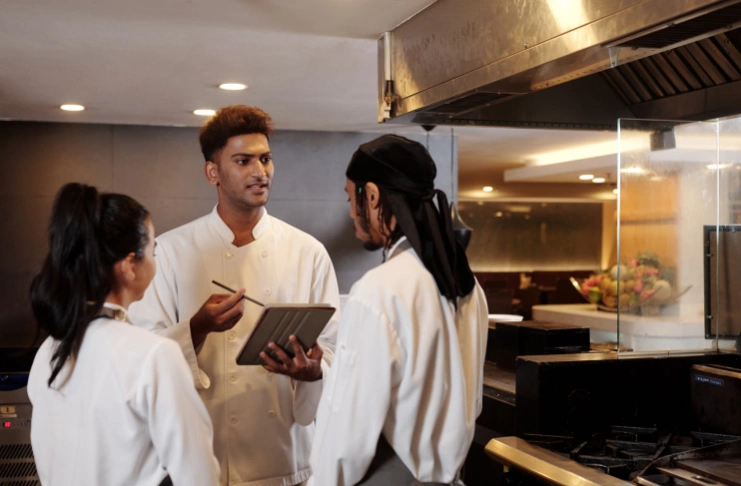
Understanding the financial mechanics of cloud kitchen operations helps you make informed decisions about pricing, expansion, and profitability targets.
Startup Costs Breakdown
Here’s a realistic breakdown of what you’ll need to launch:
Kitchen Setup and Equipment ($20,000-$40,000)
- Commercial-grade cooking equipment
- Refrigeration and storage
- Prep tables and shelving
- Small wares and utensils
Technology and Software ($3,000-$8,000)
- POS system and tablets
- Online ordering platform setup
- Inventory management software
- Kitchen display systems
Initial Inventory and Supplies ($5,000-$10,000)
- Raw materials for the first month
- Packaging and containers
- Cleaning supplies and chemicals
- Marketing materials
Permits and Legal ($2,000-$5,000)
- Business licenses and permits
- Health department inspections
- Legal setup and contracts
- Insurance premiums
Working Capital ($15,000-$30,000)
- First 3 months’ operating expenses
- Marketing and launch costs
- Staff wages during the ramp-up
- Unexpected expenses buffer
Revenue Projections and Break-Even Analysis
A typical cloud kitchen reaches break-even when monthly revenue hits $20,000-$25,000. Here’s how the math works:
Monthly Fixed Costs: $8,000-$12,000
- Kitchen rent and utilities
- Staff salaries
- Software subscriptions
- Insurance and permits
Variable Costs: 35-45% of revenue
- Food costs (25-30%)
- Delivery commissions (15-25%)
- Packaging (2-3%)
Break-even calculation: If your gross profit margin is 55-65%, you need roughly $15,000-$20,000 in monthly sales to cover fixed costs and achieve break-even.
Pricing Strategy for Maximum Profitability
Price your menu items based on food cost percentage, not competitor analysis. Target these margins:
- Appetizers and sides: 70-80% gross margin
- Main dishes: 60-70% gross margin
- Beverages: 80-90% gross margin
- Desserts: 75-85% gross margin
Factor in delivery app commissions when setting prices. If DoorDash charges 25% commission, your menu prices should account for this to maintain target profit margins.
Common Mistakes That Kill Cloud Kitchen Profitability
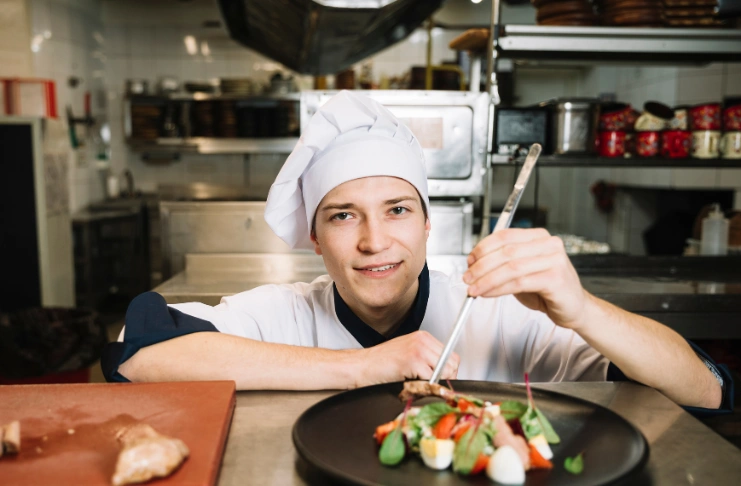
Many cloud kitchen startups fail not because the model doesn’t work, but because they make preventable operational and strategic mistakes.
Over-Complicating the Menu
New operators often launch with 50+ menu items, thinking variety drives sales. In reality, complex menus increase food waste, slow prep times, and confuse customers.
Start with 15-20 high-quality items that share ingredients. You can always expand once you’ve mastered the basics.
Ignoring Food Delivery App Algorithms
Each delivery platform uses algorithms to determine which restaurants get visibility. Factors include:
- Order acceptance rate
- Preparation time consistency
- Customer ratings and reviews
- Promotional participation
Restaurants that ignore these factors struggle to get orders, regardless of food quality.
Underestimating Marketing Needs
Many entrepreneurs think a great product sells itself. In the crowded cloud kitchen industry, you need active marketing to stand out.
Budget 5-8% of revenue for marketing activities, including social media, delivery app promotions, and customer retention programs.
Poor Financial Tracking
Cloud kitchens generate lots of small transactions across multiple revenue streams. Without proper accounting systems, it’s easy to lose track of profitability per item, per brand, or per channel.
Use restaurant-specific accounting software that integrates with your POS and delivery platforms for accurate financial reporting.
Scaling Too Fast
The low startup costs make expansion tempting, but scaling before you’ve optimized your first location leads to multiplying problems instead of profits.
Master one location completely before expanding. This means achieving consistent 20 %+ net profit margins for at least 6 months.
Legal and Regulatory Considerations
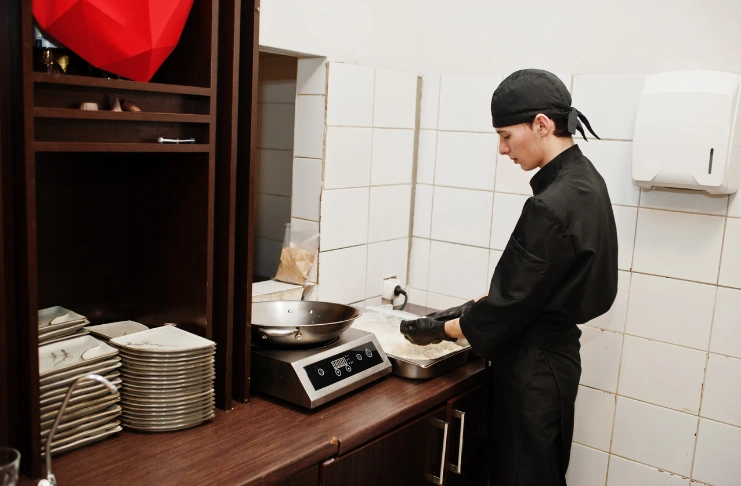
Operating a cloud kitchen involves specific legal requirements that differ from traditional restaurants in some areas but remain strict in others.
Health Department Compliance
Even without customer dining areas, cloud kitchens must meet all commercial kitchen health standards:
- Regular health inspections (typically every 6-12 months)
- Proper food storage and temperature controls
- Staff health certifications and training
- Detailed cleaning and sanitation procedures
Violations can shut down operations immediately, so compliance is non-negotiable.
Insurance Requirements
Your insurance needs differ from traditional restaurants:
- General liability insurance (lower rates due to no customer foot traffic)
- Product liability insurance (crucial for delivery-only operations)
- Commercial property insurance for equipment and inventory
- Workers’ compensation for kitchen staff
- Cyber liability insurance for online ordering systems
Work with an agent who understands food service businesses to ensure adequate coverage.
Labor Law Compliance
Cloud kitchens still must follow all employment regulations:
- Minimum wage and overtime requirements
- Break and meal period rules
- Worker classification (employee vs. contractor)
- Safety training and equipment requirements
Many operators make the mistake of treating delivery drivers as employees when they should be classified as independent contractors or vice versa.
Trademark and Brand Protection
If you’re creating virtual restaurant brands, protect your intellectual property:
- Register trademarks for brand names and logos
- Secure matching domain names and social media handles
- Create clear brand guidelines for consistent presentation
- Monitor for unauthorized use of your brand names
This becomes especially important if you plan to franchise or license your concepts.
Technology Stack for Modern Cloud Kitchens

The right technology infrastructure can make or break your cloud kitchen’s operational efficiency and profitability.
Essential Software Platforms
Point of Sale (POS) System: Your POS should integrate seamlessly with delivery apps and provide detailed reporting. Leading options include Toast, Square for Restaurants, and Clover.
Kitchen Display System (KDS): Replace paper tickets with digital displays that track order timing, prioritize prep sequences, and reduce errors. Popular choices include Fresh KDS, Toast KDS, and QSR Automations.
Order Management Platform: Consolidate orders from multiple delivery apps into one interface. Solutions like Otter, Cuboh, and ItsaCheckmate prevent missed orders and streamline operations.
Inventory Management: Track ingredient usage, automate reordering and reduce food waste with platforms like BlueCart, SimpleOrder, or MarketMan.
Delivery Integration Tools
Most successful cloud kitchens work with 3-5 delivery platforms simultaneously. Managing this requires:
- Automated menu sync across platforms
- Real-time inventory updates to prevent overselling out-of-stock items
- Centralized order fulfillment to maintain consistent timing
- Performance analytics to optimize platform relationships
Customer Data and Analytics
Use customer data to improve retention and increase order values:
- Track ordering patterns and preferences
- Send targeted promotions based on purchase history
- Identify your most valuable customers for special treatment
- A/B test menu items and pricing strategies
The most profitable cloud kitchens use data to make operational decisions rather than relying on intuition alone.
Industry Trends Shaping Cloud Kitchen Profitability
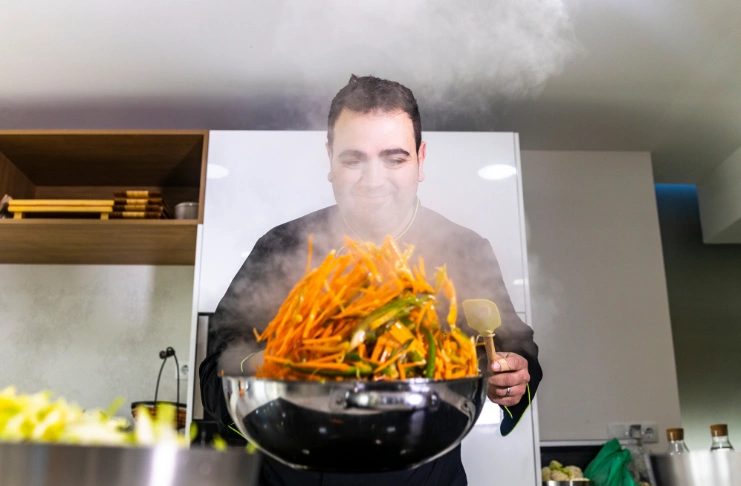
The cloud kitchen industry continues evolving rapidly. Understanding current trends helps you position your business for long-term success.
AI-Driven Menu Optimization
Artificial intelligence tools now analyze customer ordering patterns, seasonal trends, and local preferences to recommend menu changes that increase profitability.
These systems can predict which items to promote, when to introduce limited-time offers, and how to price for maximum profit margins.
Sustainability and Eco-Friendly Operations
Consumers increasingly prefer businesses with strong environmental practices. Cloud kitchens are adopting:
- Compostable packaging materials
- Local sourcing to reduce transportation emissions
- Food waste reduction programs
- Energy-efficient kitchen equipment
These initiatives often reduce costs while improving brand perception.
Ghost Kitchen Aggregation Services
Companies like CloudKitchens, Kitchen United, and Reef are building networks of shared commercial kitchen spaces specifically for delivery-only brands.
These services handle real estate, permits, and basic infrastructure, allowing operators to focus purely on food and marketing.
Integration with Grocery and Retail
Cloud kitchens are expanding beyond traditional meal delivery into:
- Meal kit preparation and delivery
- Private label food products for retail sale
- Catering services for offices and events
- Partnership with grocery stores for prepared foods
This diversification creates multiple revenue streams and reduces dependence on third-party delivery apps.
Cost Control Strategies for Maximum Profit Margins
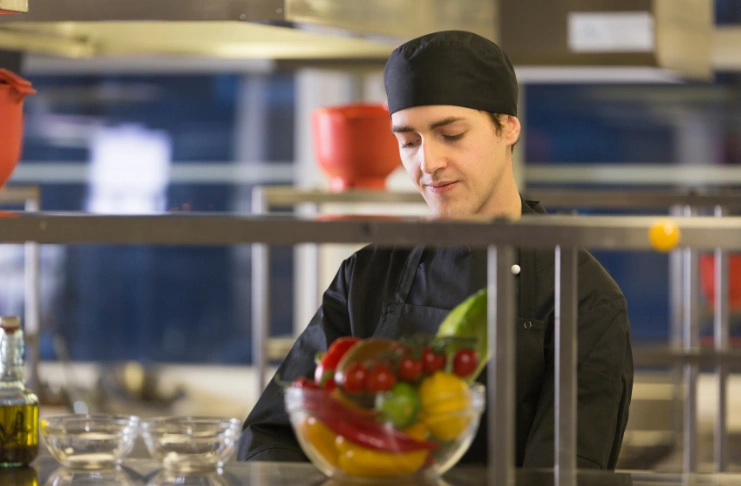
Controlling costs without sacrificing quality is crucial for cloud kitchen success. Small improvements in cost management compound quickly across hundreds of daily orders.
Food Cost Management
Target a food cost percentage of 25-30% of revenue. Achieve this through:
- Precise portion control using digital scales and standardized recipes
- Cross-utilization of ingredients across multiple menu items
- Strategic menu engineering that promotes high-margin items
- Regular supplier negotiations for volume discounts
- Seasonal menu adjustments based on ingredient costs
Labor Optimization
Labor should represent 25-30% of revenue in a well-run cloud kitchen. Optimize through:
- Cross-training staff to handle multiple stations
- Scheduling based on historical order patterns
- Using technology to reduce manual tasks
- Performance-based incentives that reward efficiency
Packaging and Supply Costs
Packaging typically runs 2-3% of revenue but impacts customer satisfaction significantly. Balance cost and quality by:
- Buying packaging in bulk to reduce per-unit costs
- Choosing suppliers that offer volume discounts
- Testing cheaper alternatives while maintaining food safety
- Designing packaging that doubles as marketing material
Utility and Overhead Management
Keep fixed costs low through:
- Energy-efficient equipment that reduces utility bills
- Shared kitchen spaces that split overhead costs
- Flexible lease terms that allow for scaling
- Regular maintenance to prevent costly equipment failures
Building Customer Loyalty in a Delivery-First Market
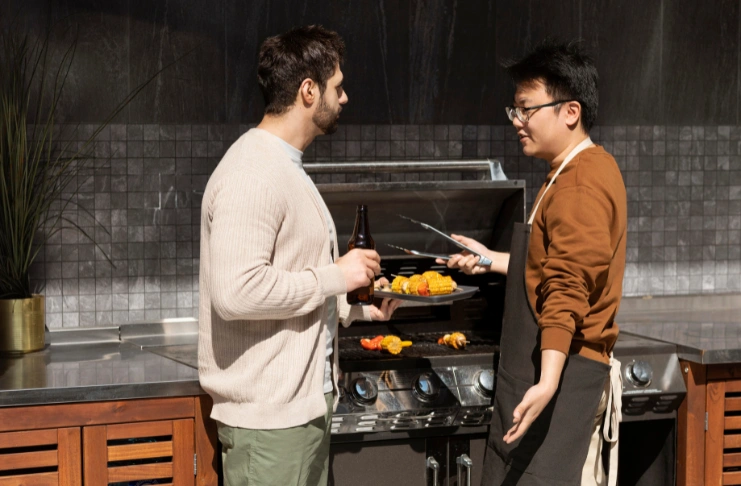
Without face-to-face interaction, cloud kitchens must work harder to build customer relationships and encourage repeat orders.
Consistent Quality and Experience
Delivery introduces variables that can affect food quality. Maintain consistency through:
- Packaging that preserves temperature and texture during transport
- Clear preparation standards that all staff follow
- Regular quality checks before orders leave the kitchen
- Quick response to customer complaints and quality issues
Personalized Marketing and Offers
Use customer data to create personalized experiences:
- Birthday discounts and anniversary celebrations
- Recommendations based on previous orders
- Loyalty programs that reward frequent customers
- Exclusive menu items for VIP customers
Community Engagement
Build local brand awareness through:
- Partnerships with local events and organizations
- Social media engagement with customers
- Supporting local causes and charities
- Participating in food festivals and pop-up events
Exceptional Customer Service
Provide outstanding service through digital channels:
- Quick response to inquiries on social media and delivery apps
- Proactive communication about order delays or issues
- Easy resolution process for customer complaints
- Surprise and delight moments like free desserts or upgrades
Measuring Success: Key Performance Indicators

Track these metrics to gauge your cloud kitchen’s financial health and operational efficiency.
Financial KPIs
- Gross Profit Margin: Target 60-70%
- Net Profit Margin: Target 15-25%
- Average Order Value: Track monthly trends and seasonal patterns
- Customer Acquisition Cost: Monitor across different marketing channels
- Customer Lifetime Value: Focus on increasing repeat purchase rates
Operational KPIs
- Order Accuracy Rate: Target 95% +
- Average Preparation Time: Benchmark against delivery app requirements
- Food Waste Percentage: Target less than 5% of food costs
- Staff Productivity: Orders per labor hour
- Customer Satisfaction Scores: Monitor across all delivery platforms
Marketing KPIs
- Delivery App Ratings: Maintain 4.5+ stars across platforms
- Social Media Engagement: Track followers, likes, and comments
- Email Open Rates: Target 20-25% for restaurant marketing
- Repeat Customer Rate: Target 30-40% within 30 days
- Direct Order Percentage: Reduce dependence on third-party apps
Use these metrics to identify improvement opportunities and make data-driven decisions about menu changes, pricing adjustments, and operational modifications.
Conclusion
The key to cloud kitchen profitability lies in execution. Focus on operational efficiency, smart menu design, and building direct customer relationships alongside delivery app partnerships. Track your metrics closely, control costs ruthlessly, and scale only after proving profitability at your first location.
The food delivery market continues growing, consumer habits favor convenience, and technology keeps improving operational capabilities. For entrepreneurs ready to commit to quality food and efficient operations, cloud kitchens offer a proven path to building a profitable food business with significantly less risk than traditional restaurant models.
Frequently Asked Questions
1. Is cloud kitchen profitable?
Yes, cloud kitchens can be highly profitable when operated efficiently. With lower overhead costs than traditional restaurants, cloud kitchens typically achieve gross profit margins of 60-70% and net profit margins of 15-25%. The key is optimizing operations for high-volume delivery orders while maintaining food quality and controlling costs.
2. What is the revenue of CloudKitchens?
CloudKitchens, the company founded by Travis Kalanick, is a private company that doesn’t publicly disclose revenue figures. However, individual cloud kitchen businesses typically generate $25,000 to $80,000 in monthly revenue per location, depending on market size, menu pricing, and operational efficiency.
3. Is a ghost kitchen profitable?
Ghost kitchens and cloud kitchens are essentially the same business model and can be very profitable. The delivery-only format eliminates dining room costs, reduces staff requirements, and allows for higher order volumes. Successful ghost kitchens often achieve break-even within 12-18 months and maintain healthy profit margins thereafter.
4. How much is CloudKitchens worth?
CloudKitchens was valued at approximately $15 billion in 2021 during its last major funding round. However, as a private company, its current valuation may differ. The high valuation reflects investor confidence in the cloud kitchen industry’s growth potential and the company’s market position.
5. What are the benefits of a cloud kitchen?
Cloud kitchens offer several key benefits: lower startup costs ($50,000-$100,000 vs $275,000-$425,000 for traditional restaurants), reduced operational overhead, the ability to test multiple brands from one location, faster break-even periods, and easier scalability. They also allow focus on food quality and delivery efficiency without front-of-house distractions.
6. Is CloudKitchens profitable?
While CloudKitchens doesn’t disclose financial details, the company continues expanding globally, suggesting strong unit economics. Individual operators using CloudKitchens facilities report varying levels of profitability depending on their execution, menu strategy, and local market conditions.
7. How much can a cloud kitchen make?
A successful cloud kitchen can generate $300,000 to $960,000 in annual revenue per location. With proper cost control and operational efficiency, this translates to $45,000-$240,000 in annual net profit. Multiple virtual brands operating from one kitchen can increase these figures significantly.
8. How successful are cloud kitchens?
Cloud kitchen success rates vary, but well-executed operations show strong performance. The industry has grown from $44.9 billion globally in 2023 and continues expanding rapidly. Success depends on location selection, menu optimization, operational efficiency, and effective marketing across delivery platforms.
9. What is the cheapest food business to start?
Cloud kitchens are among the most affordable food businesses to start, requiring $50,000-$100,000 in initial investment. Food trucks ($40,000-$80,000), catering businesses ($15,000-$40,000), and meal prep services ($10,000-$30,000) can be even cheaper but often have lower revenue potential.
10. Which food business is most profitable?
Cloud kitchens often rank among the most profitable food businesses due to their low overhead costs and high scalability. Other highly profitable food businesses include specialty catering, meal kit services, and food product manufacturing. Profitability depends heavily on execution and market positioning.
11. What is the easiest food product to sell?
For cloud kitchens, comfort foods like burgers, pizza, and ethnic cuisines (Indian, Chinese, Mexican) tend to be easiest to sell due to broad appeal and delivery-friendly formats. These items travel well, have familiar flavors, and generate consistent demand across different customer demographics.
12. What is the minimum investment to start a food business?
The minimum investment varies by business type: meal prep services can start with $10,000-$15,000, food trucks require $40,000-$60,000, and cloud kitchens need $50,000-$75,000. Traditional restaurants typically require $200,000+ in startup capital, making cloud kitchens a more accessible entry point.
13. What’s the point of ghost kitchens?
Ghost kitchens exist to serve the growing demand for food delivery while eliminating the high costs of traditional restaurant operations. They allow entrepreneurs to focus purely on food quality and delivery efficiency, test multiple concepts with lower risk, and scale more quickly than brick-and-mortar establishments.
14. What is cloud kitchen benefit?
The primary benefits include significantly lower startup and operating costs, the ability to run multiple restaurant brands from one location, faster time to market, easier expansion and scaling, reduced complexity in operations, and higher profit margins due to eliminated front-of-house expenses. This makes food entrepreneurship more accessible and potentially more profitable.





